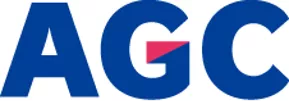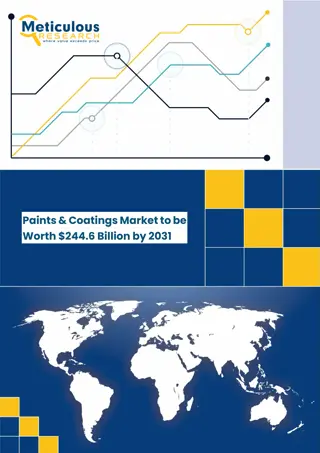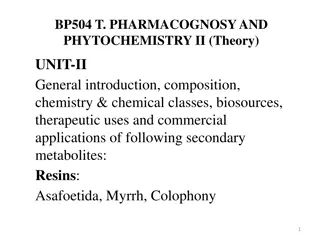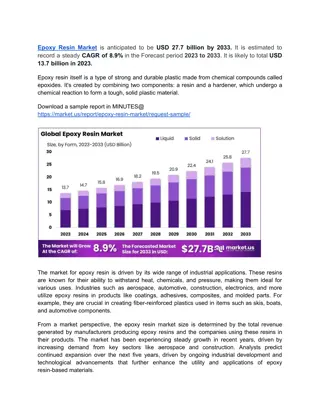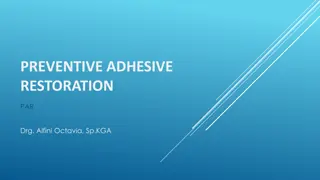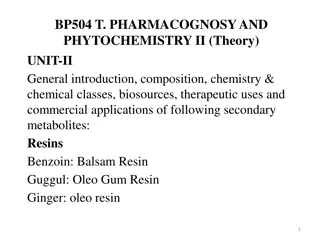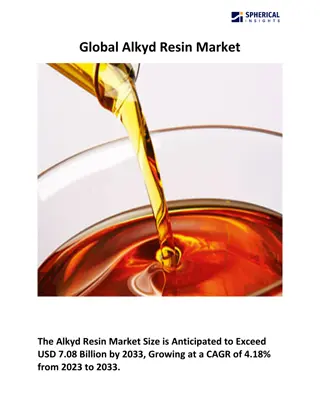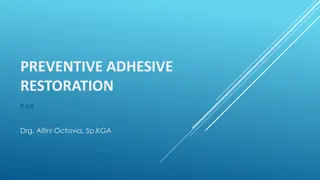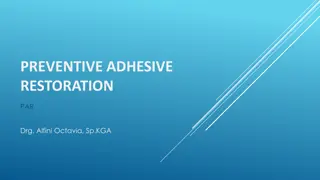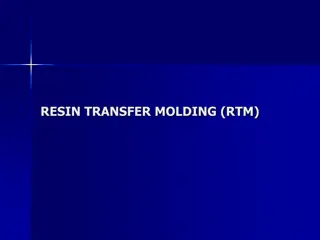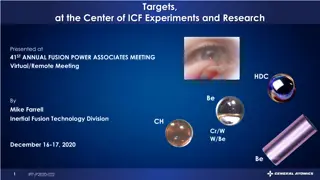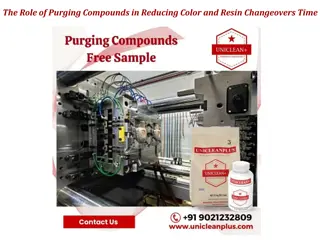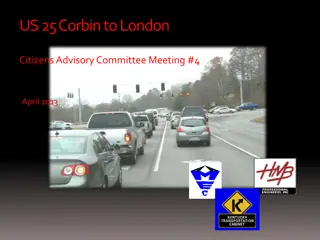Recent Advances in FEVE Fluoropolymer Resin Technology
Recent discoveries in FEVE technology showcase the impressive properties of Fluoroethylene Vinyl Ether (FEVE) resins, such as weatherability, chemical resistance, gloss, solubility, and crosslinking. These resins offer ambient cure for field applications, OH functionality for crosslinking, solvent solubility, and a wide range of gloss levels. They exhibit UV resistance, corrosion resistance, and chemical/solvent resistance, making them ideal for various coatings in architectural, industrial, aerospace, and marine applications.
Download Presentation

Please find below an Image/Link to download the presentation.
The content on the website is provided AS IS for your information and personal use only. It may not be sold, licensed, or shared on other websites without obtaining consent from the author. Download presentation by click this link. If you encounter any issues during the download, it is possible that the publisher has removed the file from their server.
E N D
Presentation Transcript
Recent Discoveries in FEVE Recent Discoveries in FEVE Fluoropolymer Fluoropolymer Resin Technology Resin Technology Performance Beyond Performance Beyond Weatherability Weatherability Bob Parker AGC Chemicals October 29, 2014
Recent Discoveries in FEVE Technology Outline: Explanation of FEVE polyol technology Summary of FEVE resins and their properties Exposure testing of FEVE resin formulations Corrosion resistance testing Chemical Resistance Testing Moisture Permeability Testing Summary 1
Recent Discoveries in FEVE Technology Fluoroethylene Vinyl Ether (FEVE) Resins FLUORINATED SEGMENTS: Weatherability, chemical resistance VINYL ETHER SEGMENTS: Gloss, solubility, crosslinking 2
Recent Discoveries in FEVE Technology Characteristics of FEVE Fluoropolymer Resins: Ambient Cure Allows field applications at ambient temperatures OH Functionality - Crosslinkable with hardeners Solvent Soluble Conventional application techniques Wide range of gloss Fluoropolymer Segments UV Resistance Corrosion resistance Chemical and solvent resistance 3
Recent Discoveries in FEVE Technology Markets for FEVE resin-containing coatings: 1) Architectural Coatings for commercial buildings 2) Industrial Maintenance Coatings for water towers, bridges, and assorted metal and concrete structures 3) Aerospace coatings 4) Applications in Marine environments 4
Recent Discoveries in FEVE Technology Commercial Types of FEVE Polyol Resins: 1) Solvent soluble resins uses organic solvents for viscosity reduction; predominantly cured with isocyanates; available as resin solutions or as 100% solid resins 2) Water-based dispersion carboxyl modification of FEVE resin to obtain stable dispersion in water 5
Recent Discoveries in FEVE Technology Commercial Types of FEVE Polyol Resins: 3) Water-based emulsion use vinyl ether macromonomers containing polyoxyethylene (EO) units to create stable emulsion 6
Recent Discoveries in FEVE Technology QUV-B Weatherometer Exposure Testing 110 100 90 Gloss Retention (%) 80 70 60 FEVE Coating 50 Polysiloxane Coating 40 Acrylic Urethane Coating 30 20 10 0 0 1000 2000 3000 4000 5000 6000 Hours of QUV Exposure (UVB-313 Bulbs) 7
Recent Discoveries in FEVE Technology QUV-A Weatherometer Exposure Testing 110 100 Gloss Retention (%) 90 80 70 60 FEVE Coating Polysiloxane Coating 50 Acrylic Urethane Coating 78/22 FEVE/polyester Blended Coating 40 0 500 1000 1500 2000 2500 3000 Hours of QUV Exposure (UVA-340 Bulbs) 8
Recent Discoveries in FEVE Technology Sunshine Weatherometer Exposure Testing (Carbon Arc) 110 100 Gloss retention (%) 90 80 70 60 LF200 coating 50 PVDF coating 40 Acrylic Urethane coating 30 20 10 0 0 500 1000 1500 2000 2500 3000 3500 4000 4500 SWOM Exposure (hours) 9
Recent Discoveries in FEVE Technology EMMAQUA Testing (Outside Test Fence Arizona) 110 100 90 Gloss retention (%) 80 70 FEVE coating 60 PVDF coating 50 40 Acrylic Urethane coating 30 20 10 0 0 400 800 1200 1600 2000 2400 2800 3200 Radiant Energy (Mj/m ) 10
Recent Discoveries in FEVE Technology South Florida Test Fence Exposure 110 100 90 Gloss retention (%) 80 70 60 50 FEVE Yellow Coating 40 FEVE Clearcoat 30 20 10 0 0 1 2 3 4 5 6 7 8 9 10 11 Years of Exposure 11
Recent Discoveries in FEVE Technology Corrosion Resistance Test of FEVE Coatings: LOCATION: Suruga Bay Marine Test Station (offshore) LENGTH OF TEST: 16 years COATINGS SYSTEMS ON TEST: 1) Zinc-rich primer / Epoxy Midcoat / Acrylic Urethane Topcoat 2) Zinc-rich primer / Epoxy Midcoat / Fluorourethane Topcoat THICKNESS OF COATING: PRIMER = 3 mils / MIDCOAT = 6 mils / TOPCOAT = 1 mil(25 microns) 12
Recent Discoveries in FEVE Technology Measurement of Total Erosion of the Topcoat ACRYLIC URETHANE TOPCOAT FLUOROURETHANE TOPCOAT INITIAL MEASUREMENT (microns) 25 25 FINAL MEASUREMENT (microns) 0 (after 13 years) 21 13
Recent Discoveries in FEVE Technology EDX (Energy Dispersive X-Ray Microanalysis) SEM Scan of cross section Of Coating System (after 16 year exposure) BLUE: Chloride GREEN: Coating System RED: Metal 14
Recent Discoveries in FEVE Technology AFTER 15 YEARS INITIAL SEM Scan of Zinc-rich Primer 15
Recent Discoveries in FEVE Technology 2000 Hours of B117 Salt Spray testing (Panels primed with 3 mils of 2K Epoxy) 2K Polyurethane on the left (1 Coat) 2K Fluoro-urethane on the right (1 Coat) 16
Recent Discoveries in FEVE Technology 2000 Hours of B117 Salt Spray testing (Panels primed with 3 mils of 2K Epoxy) 2K Polysiloxane on the left (1 Coat) 2K Fluoro-urethane on the right (1 Coat) 17
Recent Discoveries in FEVE Technology Chemical Resistance Testing The following testing is immersion testing. The coated test panels are fully immersed in the chemical/solvent and observed for any changes in their appearance 18
Recent Discoveries in FEVE Technology The test coating is a gloss white 2-pack fluorourethane. FEVE Resin with medium crosslink density (Days to Failure*) FEVE Resin with high crosslink density (Days to failure*) CHEMICAL EXPOSURE (Acid or Base) 10% HCl (Hydrochloric Acid) >30 >30 10%H2SO4 (Sulphuric Acid) >30 >30 5% CH3COOH (Acetic Acid)) 17 >30 1% H2SO3 (Sulphur Dioxide) 3 3 10% NaOH (Sodium Hydroxide) >30 >30 12% NaOCl (Sodium Hypochlorite) >30 >30 *Failure is defined as one of these changes in the dry film: 1) The appearance of blisters 2) Gloss reduction 3) Total paint film degradation 19
Recent Discoveries in FEVE Technology The test coating is a gloss white 2-pack fluorourethane. FEVE Resin with medium crosslink density (Days to Failure*) FEVE Resin with high crosslink density (Days to failure*) SOLVENT EXPOSURE Aqueous Formaldehyde >30 >30 Benzene >30 >30 Xylene 10 >30 Acetone 20 20 Isopropanol 20 20 *Failure is defined as one of these changes in the dry film: 1) The appearance of blisters 2) Gloss reduction 3) Total paint film degradation 20
Recent Discoveries in FEVE Technology 4 Hour Spot Test 98% Sulphuric Acid Panel #2 Panel #1 3-4 mils of Epoxy primer 5-6 mils of FEVE-based clear coating Coating remained intact 3-4 mils of Epoxy Primer Coating dissolved immediately 21
Recent Discoveries in FEVE Technology Moisture Permeability Testing Following ASTM Test Method E96 or D1653 Measuring the amount of water vapor transmitted through the film of the cured coating Unit of measurement is grams of water vapor per cm per hour There is a correlation between the amount of moisture permeability of the coating and the degree of corrosion of the substrate 22
Recent Discoveries in FEVE Technology Cured with Hardener Film Thickness (microns) Total Moisture Permeation** Resin Type 20 1.09 x 10 FEVE polyol* No 20 4.5 x 10 Acrylic Polyol No 21 0.45 x 10 FEVE Polyol* Yes 14 1.55 x 10 Acrylic polyol Yes *medium crosslink density resin **grams of water vapor per cm per hour 23
Recent Discoveries in FEVE Technology Summary FEVE resin technology is an alternative choice for exterior coatings, both pigmented coatings and clearcoats. They possess some interesting properties that expand the list of formulating tools which can be used in the pursuit of high- performance industrial maintenance coatings. FEVE resin technology can be easily incorporated into many standard solvent-based and water-based formulations. 24
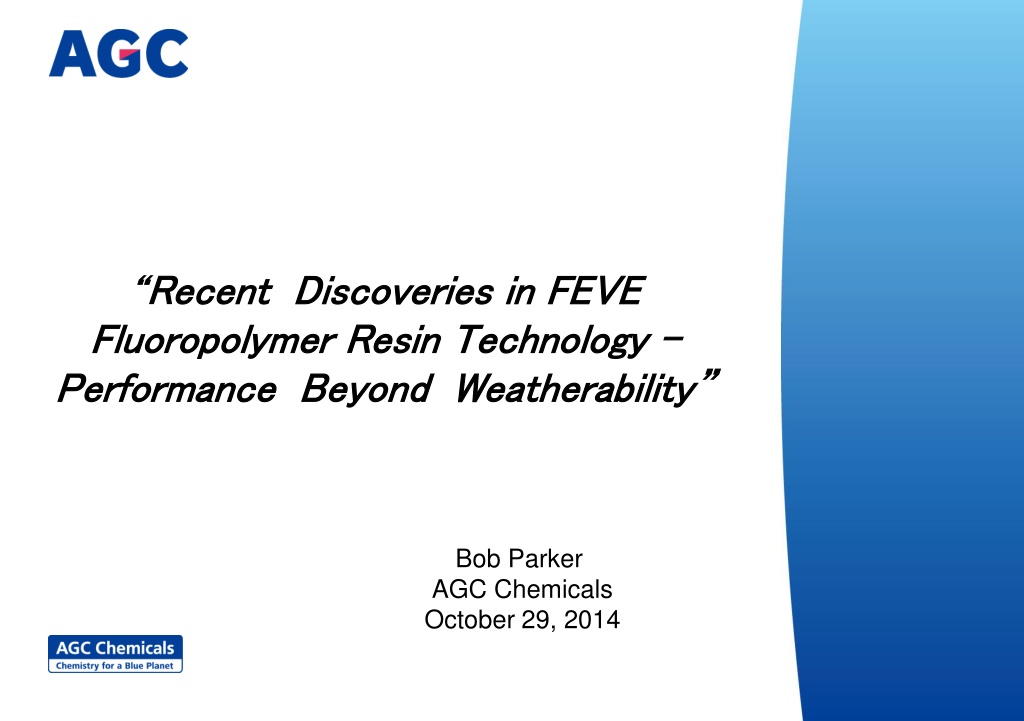
 undefined
undefined
